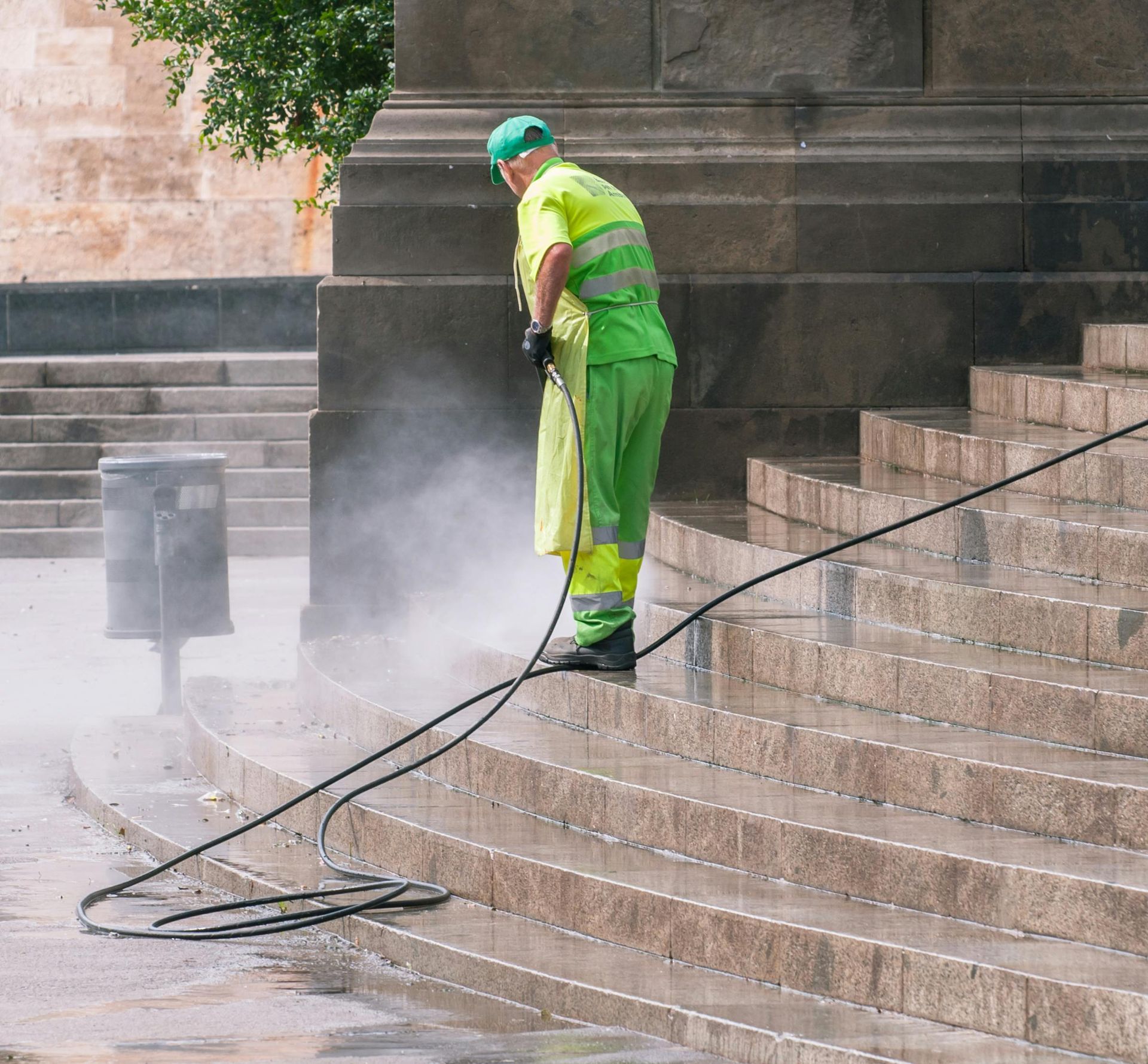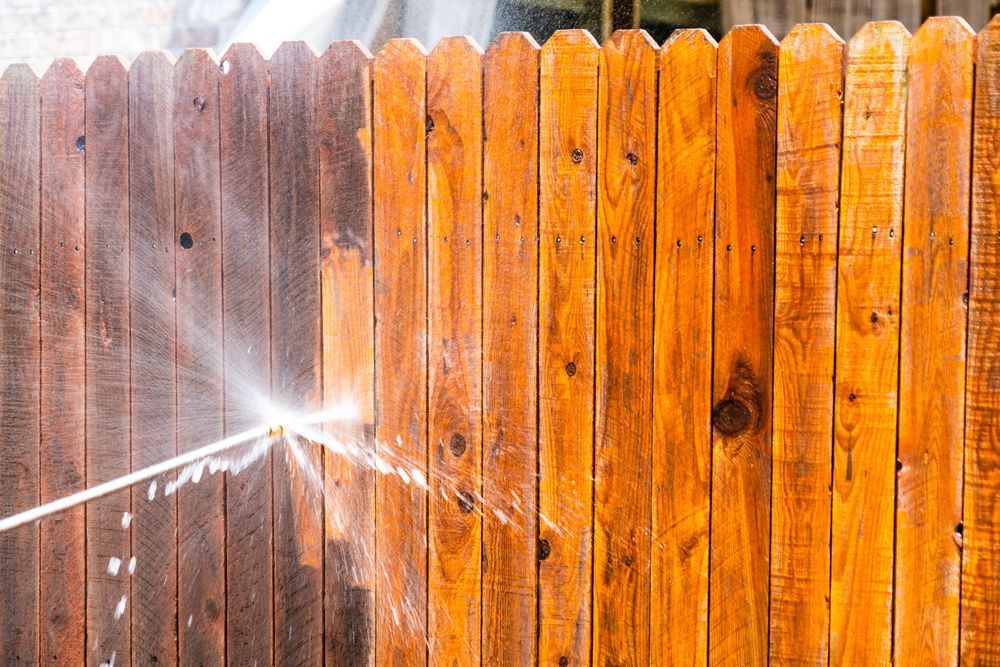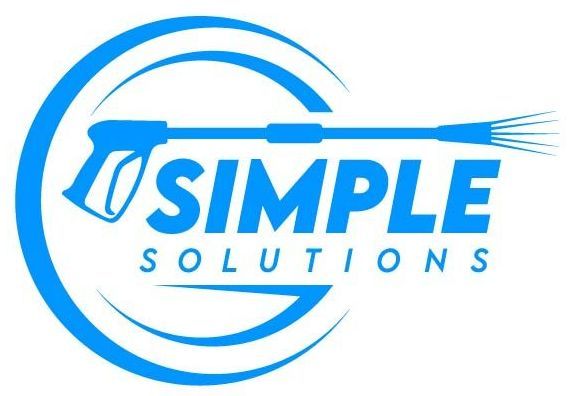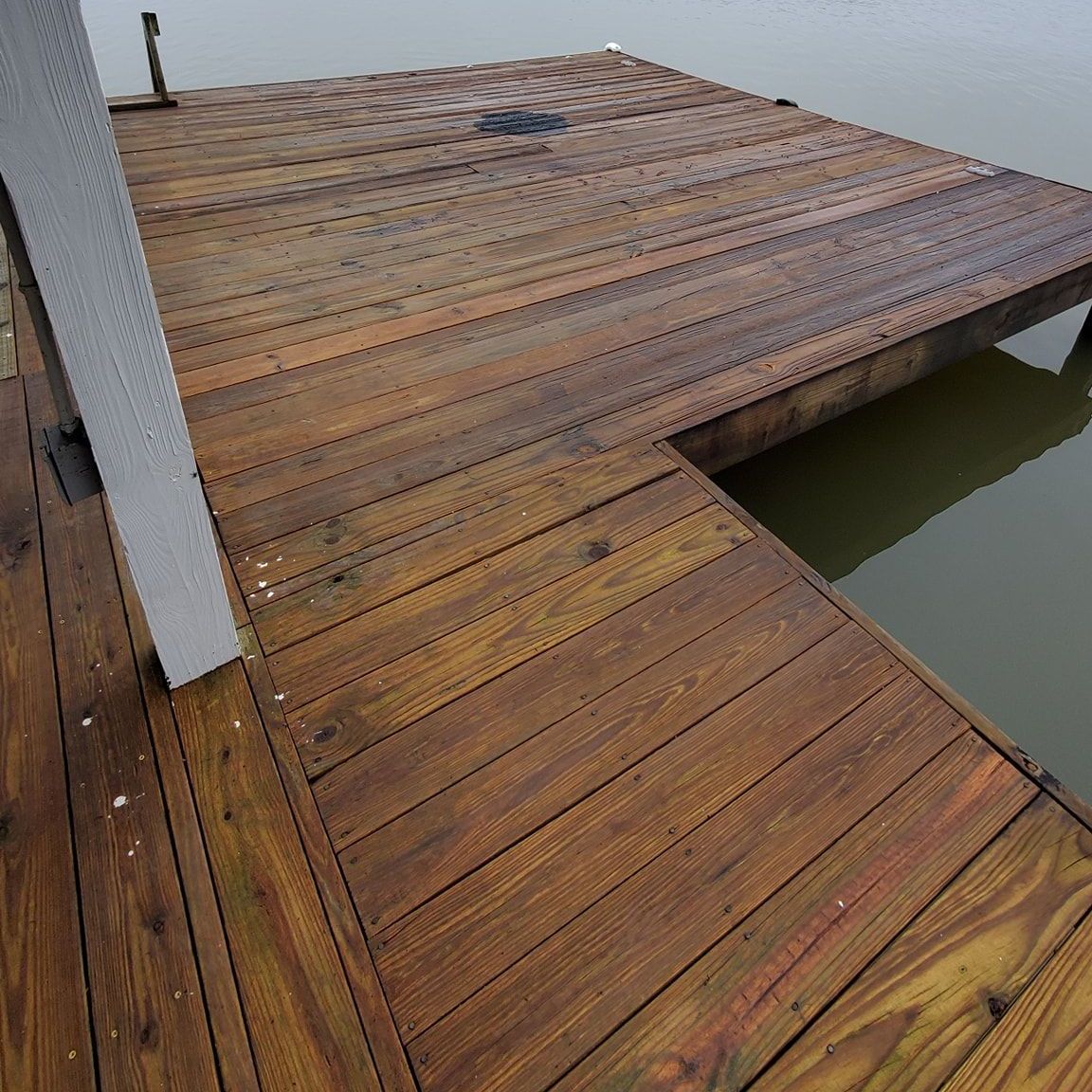Get in touch
555-555-5555
mymail@mailservice.com
How Often Should I Pressure Wash My Home?
Why Pressure Washing Is Important

Your home’s exterior faces a constant assault from the elements. Wind, rain, sunlight, and temperature fluctuations all play a role in breaking down surfaces, leading to everything from peeling paint to the formation of mold and mildew. Add to that everyday dirt, pollen, and air pollution, and you have a recipe for a dirty facade.
Regular pressure washing can help:
- Prolong the life of exterior materials: Whether you have vinyl siding, brick, or wood, cleaning away grime prevents deterioration.
- Boost curb appeal: A clean home exterior makes a strong first impression on visitors and neighbors.
- Protect your family’s health: Mold, mildew, and algae growth can contribute to allergies or respiratory issues if left unchecked.
- Maintain property value: A well-maintained home retains its value better over time, which can pay off if you decide to sell.
If neglected, these contaminants can damage the structure, leading to costly repairs. A consistent pressure washing schedule is therefore not just about appearances—it’s also about safeguarding your investment.
List of Services
-
List Item 1Item Link List Item 1
Prolong the life of exterior materials: Whether you have vinyl siding, brick, or wood, cleaning away grime prevents deterioration.
-
List Item 2 Write a description for this list item and include information that will interest site visitors. For example, you may want to describe a team member's experience, what makes a product special, or a unique service that you offer.Item Link List Item 2
-
List Item 3 Write a description for this list item and include information that will interest site visitors. For example, you may want to describe a team member's experience, what makes a product special, or a unique service that you offer.Item Link List Item 3
-
List Item 4 Write a description for this list item and include information that will interest site visitors. For example, you may want to describe a team member's experience, what makes a product special, or a unique service that you offer.Item Link List Item 4
Factors That Influence Frequency
The question, “How often should I pressure wash my home?” doesn’t have a one-size-fits-all answer. Several factors come into play, making the ideal schedule unique to each property. Here are some of the key considerations:
- Climate and Weather:
- If you live in a humid region or an area with heavy rainfall, mold and mildew can thrive. This might necessitate more frequent washing—sometimes twice a year.
- Dry, windy climates may result in dust and pollen buildup, also requiring additional cleanings.
- Type of Exterior:
- Different materials have different tolerances for grime. For instance, vinyl siding might show dirt more readily, whereas brick can hide it for longer.
- Wood surfaces can accumulate mildew quickly and may require careful, gentler cleaning techniques, such as soft washing.
- Local Environment:
- Neighborhood factors like nearby factories, heavy vehicle traffic, or construction sites can increase the level of airborne pollutants.
- Homes under dense tree cover are more susceptible to moss or algae growth due to shade and moisture.
- Visual Appearance:
- Some homeowners prefer a spotless look at all times, especially if they host gatherings or events. In such cases, you may wash more often than the average recommendation.
- Personal Preferences and Budget:
- While more frequent cleaning keeps your home looking pristine, it does come with costs—either financial (if hiring professionals) or time and effort (if doing it yourself). Balancing aesthetics with practicality is key.
Taking these factors into consideration, you can better determine how often your home needs pressure washing to remain in optimal condition.
Recommended Pressure Washing Schedule
While the frequency can vary, many experts suggest a thorough pressure wash at least once a year under normal conditions. This annual schedule works well for most homes in moderate climates without extreme moisture or pollution. However, if your property faces harsher elements or you simply prefer a spotless exterior, you could consider washing more frequently:
- Twice a Year: Homes in regions with high humidity, heavy rainfall, or significant snowfall could benefit from two cleanings—one in the spring to remove winter residue and another in the fall to clear away pollen, dirt, and mildew from the summer months.
- Every 12–18 Months: If you live in a milder climate or have a property that doesn’t accumulate much dirt, you might extend the interval to every 12–18 months. Regular inspection remains crucial, though—if you notice visible grime or algae, don’t wait too long.
By following a schedule that suits your environment and home materials, you’ll ensure that any contaminants are removed before they cause lasting damage.
Signs It’s Time to Pressure Wash
Even if you have a set schedule, certain signs indicate it’s time for a cleaning sooner rather than later. Look for the following:
- Visible Dirt and Grime: If your siding, driveway, or deck looks noticeably dirty or discolored, it’s a clear sign that a cleaning is overdue.
- Mold or Mildew Growth: Patches of green, black, or brown on your exterior surfaces often point to mold, mildew, or algae. These organisms not only harm your property’s appearance but can also spread rapidly.
- Discolored Paint: Over time, layers of dirt and pollutants can cause your paint to look dull or faded. A good pressure wash can restore some of its luster without necessarily requiring a fresh paint job.
- Allergy Symptoms: If household members start experiencing increased allergies, the culprit could be mold spores or pollen buildup around the home’s exterior. Washing away these irritants can provide relief.
- Slippery Surfaces: Algae and moss often make walkways, decks, and driveways slippery. If you notice these areas becoming a hazard, pressure washing will improve safety.
Keeping an eye out for these warning signs helps you schedule your cleaning at the most impactful times—before more serious issues develop.
Common Surfaces to Pressure Wash
When considering how often you should pressure wash your home, remember that a comprehensive approach typically includes multiple surfaces:
- Siding: Whether vinyl, wood, or brick, your siding is likely the largest and most visible external surface. It’s also the first line of defense against the elements, so keeping it clean is crucial.
- Roof: While “pressure washing” a roof often refers to a softer washing method to avoid damage, removing algae and moss growth can extend its lifespan.
- Driveway and Walkways: Concrete and paver surfaces benefit from periodic washing to prevent staining and weed growth between cracks.
- Decks and Patios: Wooden decks and composite patios require gentler techniques, but they still need cleaning to avoid mold and algae accumulation.
- Fences: Wood, vinyl, or metal fences can all accumulate grime over time, detracting from your home’s curb appeal.
Each of these surfaces may accumulate debris at different rates. For example, a shaded deck might need more frequent attention than the sunny front driveway. Tailor your cleaning efforts to the specific conditions of each area around your home.
Benefits of Hiring Professionals
While you can rent or buy pressure washing equipment, hiring a professional offers numerous advantages:
- Expertise and Experience: Professionals understand the correct pressure levels, cleaning solutions, and techniques for each surface. This knowledge minimizes the risk of damage and ensures a more thorough result.
- Time Savings: Properly pressure washing a home can be time-consuming, particularly if you lack experience. A professional crew can complete the job quickly and efficiently.
- Safety Measures: Using high-powered equipment can be dangerous, especially when cleaning roofs or second-story exteriors. Experts have the necessary safety gear and training to avoid accidents.
- Eco-Friendly Solutions: Reputable companies often use biodegradable cleaning agents that won’t harm your landscaping or local waterways. They also take care to manage runoff properly.
- Long-Term Cost-Effectiveness: If you damage your siding or other surfaces by using too much pressure, the repair costs can far exceed the price of hiring a professional from the start. Plus, consistent professional cleaning can help identify potential issues before they become expensive repairs.
DIY vs. Professional Pressure Washing
For many homeowners, deciding whether to pressure wash themselves or hire a professional involves weighing cost, time, and personal confidence. Here are a few points to consider:
- Equipment Costs: Renting a pressure washer for a day can be less expensive than hiring a professional, but if you need repeated cleanings, equipment rentals or purchases can add up.
- Learning Curve: Pressure washing might look straightforward, but using the wrong nozzle or technique can damage surfaces or even cause injuries. Practice and caution are essential.
- Coverage and Detail: Professionals are trained to reach every nook and cranny, while amateurs might overlook hidden areas.
- Insurance: If a professional company causes damage, they typically have insurance to cover it. DIY mistakes come out of your pocket.
If you’re comfortable with the equipment and have prior experience, a DIY approach might be fine for smaller or simpler tasks. However, many people find peace of mind in leaving the job to seasoned pros—especially for multi-story homes or when dealing with delicate surfaces.
Maintenance Tips Between Washes
Even if you decide to only pressure wash once or twice a year, you can keep your home’s exterior looking great by adopting a few simple maintenance practices between major cleanings:
- Regular Inspections: Walk around your property every month or two. Check for signs of discoloration, moss, or mildew. Catching small issues early prevents them from becoming significant concerns.
- Trim Vegetation: Overhanging branches and dense shrubs can trap moisture against your home’s exterior, leading to algae or mold growth. Trimming them back allows air to circulate freely.
- Clean Gutters: Clogged gutters can lead to water overflow and damage to siding or the foundation. Keeping gutters free of debris helps control moisture and prevents exterior staining.
- Sweep Walkways and Decks: A quick sweep or rinse with a garden hose helps remove leaves, dirt, and other debris that can encourage organic growth.
- Spot-Treat Problem Areas: If you notice small patches of mold or algae, treat them immediately with a mild cleaning solution or a specialized spray. Quick intervention can save you time and effort later.
By incorporating these habits into your routine, your property remains cleaner for longer, possibly extending the interval between full-scale pressure washes.
Safety Considerations
Pressure washing is highly effective, but it does come with a few safety concerns:
- Protective Gear: Always wear eye and ear protection, and consider gloves and sturdy footwear. Pressure washers can propel debris at high speeds.
- Correct Pressure Settings: High PSI (pounds per square inch) can strip paint, damage wood, or etch stone. Always test on a small area to confirm you’ve chosen the right settings.
- Ladder Safety: If you’re washing a multi-story home, avoid stretching too far or standing on the top rungs. https://www.osha.gov/laws-regs/regulations/standardnumber/1926/1926.1053 on stable ground, or hire a professional for those tough-to-reach areas.
- Electrical Risks: Be mindful of electrical outlets, outdoor lighting, and power lines. Water and electricity are a dangerous mix.
- Environmental Impact: Use cleaning solutions sparingly and ensure runoff doesn’t enter storm drains or waterways. Opt for eco-friendly detergents whenever possible.
Taking a few extra precautions can help prevent accidents or damage, ensuring a safe and successful pressure washing experience.
Conclusion
How often should you pressure wash your home? The short answer: At least once a year for most properties, with adjustments based on your climate, local environment, and personal preference. By establishing a regular cleaning schedule, you’ll protect your home from dirt, mold, and algae, all of which can cause costly damage and health issues over time.
Remember, this is more than just a cosmetic task—it’s a key element of home maintenance. Whether you tackle the job on your own or hire seasoned professionals, ensuring your house remains clean and well-maintained can boost curb appeal, preserve property value, and keep your household healthier.
If you’re unsure about the right frequency or method for your specific home, consider booking a consultation with a professional pressure washing service. They’ll assess your property’s unique needs and provide personalized advice. Regularly inspect your exterior, stay alert for signs of buildup, and don’t hesitate to schedule a washing sooner rather than later if you notice mold, mildew, or heavy discoloration.
By following these guidelines and tailoring them to your home’s unique circumstances, you’ll enjoy a cleaner, safer, and more inviting property all year long.
Need professional help or have questions? Feel free to reach out. Their expertise can save you time, protect your investment, and ensure that your home remains in prime condition for years to come.

706-881-0945
All Rights Reserved | Simple Solutions Pressure Washing | Privacy Policy | Web Design By A Guy That Designs

